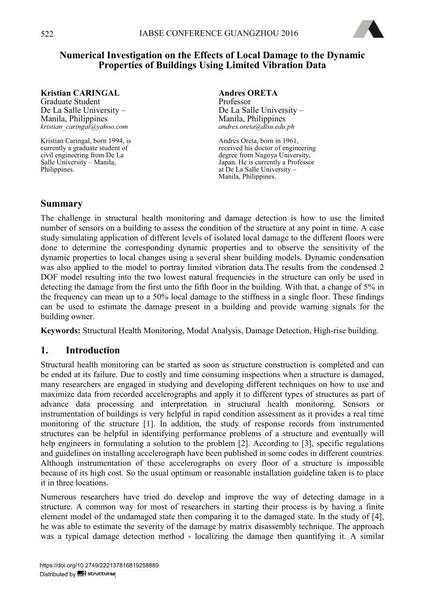Numerical Investigation on the Effects of Local Damage to the Dynamic Properties of Buildings Using Limited Vibration Data

|
|
|||||||||||
Détails bibliographiques
| Auteur(s): |
Kristian Caringal
Andres Oreta |
||||
|---|---|---|---|---|---|
| Médium: | papier de conférence | ||||
| Langue(s): | anglais | ||||
| Conférence: | IABSE Conference: Bridges and Structures Sustainability - Seeking Intelligent Solutions, Guangzhou, China, 8-11 May 2016 | ||||
| Publié dans: | IABSE Conference, Guangzhou, China, 8 – 11 May 2016 | ||||
|
|||||
| Page(s): | 522-529 | ||||
| Nombre total de pages (du PDF): | 8 | ||||
| Année: | 2016 | ||||
| DOI: | 10.2749/222137816819258889 | ||||
| Abstrait: |
The challenge in structural health monitoring and damage detection is how to use the limited number of sensors on a building to assess the condition of the structure at any point in time. A case study simulating application of different levels of isolated local damage to the different floors were done to determine the corresponding dynamic properties and to observe the sensitivity of the dynamic properties to local changes using a several shear building models. Dynamic condensation was also applied to the model to portray limited vibration data.The results from the condensed 2 DOF model resulting into the two lowest natural frequencies in the structure can only be used in detecting the damage from the first unto the fifth floor in the building. With that, a change of 5% in the frequency can mean up to a 50% local damage to the stiffness in a single floor. These findings can be used to estimate the damage present in a building and provide warning signals for the building owner. |
||||
| Mots-clé: |
bâtiment haut
|
||||
